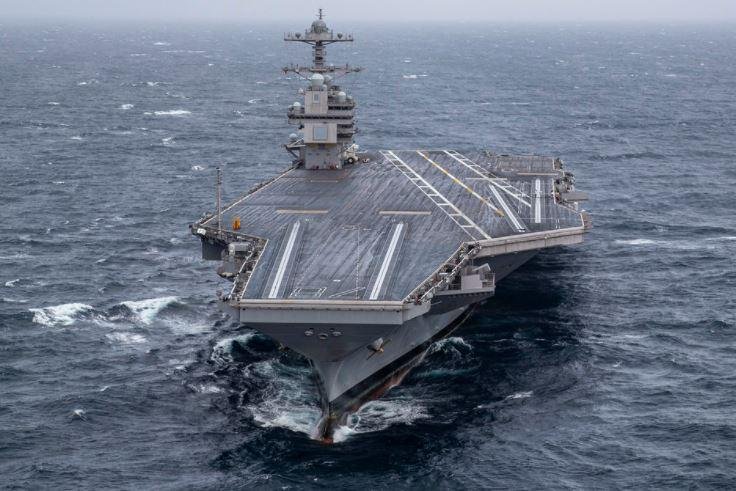The aircraft carrier USS Gerald R. Ford, pictured in 2019, completed its post-delivery test and trials, the Naval Sea Systems Command announced on Wednesday. Photo by MCS3 Connor Loessin/U.S. Navy
May 5 (UPI) -- The aircraft carrier USS Gerald R. Ford completed its 18-month post-delivery test and trials, the U.S. Naval and Sea Systems Command announced on Wednesday.
The successful conclusion of the test on the first-in-class aircraft carrier is a milestone in the vessel's development, NAVSEA said in a press release.
The post-delivery tests and trials, which concluded on April 30, precede Full Ship Shock Trials, scheduled for the summer, and a Planned Incremental Availability that starts in September.
FSST testing involves assessment of "the ability of shipboard equipment and systems to operate satisfactorily after a shock event, and validate the shock model used during the design process for Gerald R. Ford-class aircraft carriers," according to the Navy.
"Shock" or "shock hardening" refers to "shipboard equipment survivability" in the event of an attack or explosion, according to a Navy directive.
The six-month PIA testing refers to a maintenance period for post-FSST repairs and upgrades prior to deployment and operational status, which, for the USS Gerald R. Ford, is expected to conclude in February 2022.
The ship, 1,092 feet long and capable of carrying over 4,500 personnel with its crew, air wing and staff, as well as 75 aircraft and surface-to-air missiles, will then be eligible for formal deployment.
The ship has already been certified in a number of categories.
In April, it completed its Combat Systems Ship's Qualifications Trials, a five-phase test of safe and effective use of the ship's firepower and defenses in the Atlantic Ocean.
The final phases, known as 2C and CSSQT overall, involved defense against rocket-propelled drones capable of speeds in excess of 600 miles per hour, towed drone units simulating rockets and remote-controlled, high-speed maneuvering surface targets.
Tests of a new range of electrical sensors aboard the ship in December 2020 were also successful.
A Sensor Accuracy Test team of the Naval Undersea Warfare Center Division Newport NATO Naval Forces Weapon and Sensor Accuracy Check Site, based in Rhode Island, executed a sensor accuracy test on the ship.
The ship's bearing, range and heading accuracy of shipboard sensors, including radars, sonars, gyrocompasses, electronic warfare systems, electro-optical and laser tracking systems and navigation were tested.















